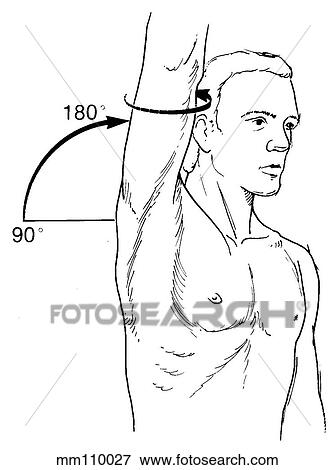

ABDUCTION OF SHOULDER OFFLINE
The first stage was an offline qualitative decision-applying Extenics theory, and the second was a real-time decision process using neutrosophic logic and DSmT theory. The control method integrated Extenics theory with neutrosophic logic to obtain a two-stage decision-making algorithm. We developed it for a hexapod walking robot that combines multiple bipedal robots to increase its load. Reestablishing the typical 2:1 scapulohumeral rhythm will improve total range of motion, decrease pain and improve functional independence.This paper presents a hybrid force/position control. Keep an eye on the mechanics of the patient and cue as needed if mechanics degrade. Treatment focuses on perfect reps, even if total range has to be reduced. The focus of these treatments is for slow controlled mechanics in order to improve motor planning and neuromotor recruitment to the muscles around the scapula. “hold a peanut or a dollar bill between your shoulder blades” “put the shoulders in their back pockets” and/or There are some common cues that are often given to patients which include: Do not allow a shoulder hike/elevation or a lean backwards. This engages the scapular muscles while maintaining good mechanics. Have them grab the theraband ends and pull towards them (retraction) by driving the elbows back. O Description: With the patient in standing facing a doorway, trap the theraband in the hinge side of the door. Position 1, the patient’s arm is relaxed at their side (0 degrees of humeral elevation).The 3 primary positions for the LSST are: This can demonstrate the location of the asymmetry in the rhythm. If the therapist suspects that this may be the problem, having the patient complete the Lateral Scapular Slide Test (LSST) can help to helpful. If you have a patient with a significant decrease in shoulder range of motion in any of the planes of movement the rhythm could be a primary concern for the therapist. “Treatment focuses on practicing perfect reps, even if total range has to be decreased.” This can present in a variety of ways such as winging of the scapula, a shrug sign, scapular adduction, or scapular abduction during shoulder movements ( scapular humeral rhythm). However, this ratio varies among individuals.Ī scapulohumeral dysrhythmia is an abnormality in a physiologic rhythm of the movement between the scapula and the humerus when moving the arm in any plane of movement. This means for every 2 degrees the humerus moves, the scapula moves 1 degree. The standard ratio is often recognized as 2:1. Scapulohumeral rhythm is the rhythm in which our scapula moves, in relation with the humerus in the glenohumeral joint as a means for shoulder mobility ( glenohumeral rhythm). This may also be a critical component in order to prevent shoulder conditions during rehabilitation of other upper extremity conditions such as distal radius fractures, tendon injuries, and elbow injuries. Scapulohumeral rhythm is often the key component when treating shoulder conditions and the reason for the lack of total shoulder range of motion.


 0 kommentar(er)
0 kommentar(er)
